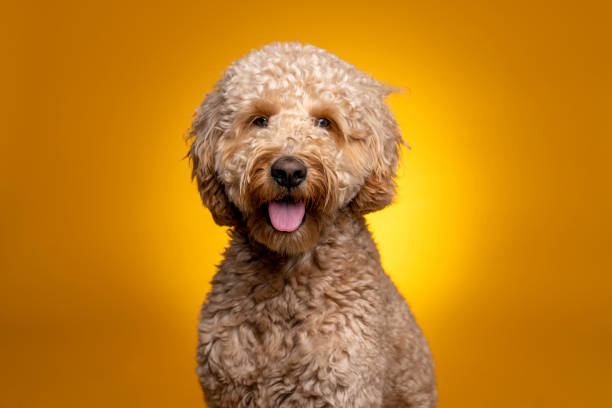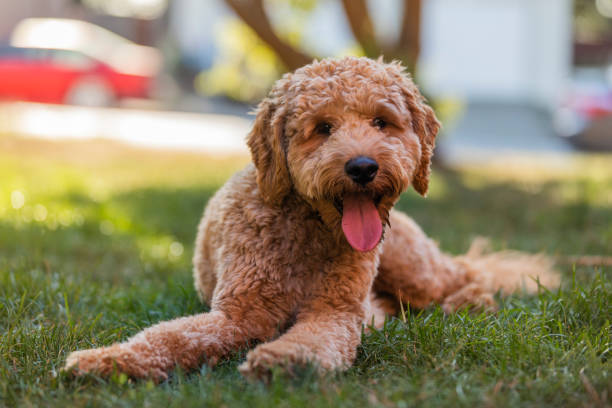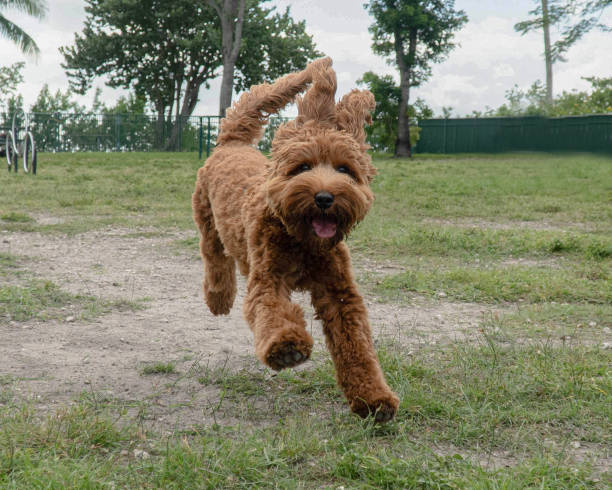Goldendoodle

Breed History:
The Goldendoodle is a hybrid breed developed by crossing a Golden Retriever with a Poodle (usually Standard or Miniature). First intentionally bred in the 1990s in North America and Australia, Goldendoodles were created to combine the friendly, eager-to-please temperament of the Golden Retriever with the intelligence and hypoallergenic coat of the Poodle.
While not officially recognised by major kennel clubs due to their hybrid status, Goldendoodles have quickly become one of the most popular designer breeds, prized for their loving nature, low-shedding coats, and suitability for families, therapy, and service work.
|
Gender |
Height |
Weight |
|
Male |
53–63 cm |
23–35 kg |
|
Female |
50–60 cm |
20–32 kg |
Size – Medium to Large
Life Expectancy: 10–15 years

Breed Appearance:
Goldendoodles typically have a soft, wavy or curly coat that ranges from loose waves to tight curls depending on genetic influence. Their coat is often low-shedding and may be cream, apricot, gold, red, chocolate, black, or multi-colored.
They have expressive, almond-shaped eyes, a broad skull, and a friendly expression. Their body is athletic and well-balanced, with long legs and a fluffy tail. Though individual appearance varies, Goldendoodles tend to look like teddy bears with their plush coats and sweet demeanor.
Breed Type – Companion/Family Dog:
Goldendoodles are affectionate, outgoing, and sociable dogs that thrive in family settings. They form strong bonds with people and are known for their gentle and intuitive nature, making them popular as therapy and emotional support dogs.
They generally get along well with children, other dogs, and even cats, and are happiest when included in daily family activities. Goldendoodles are social creatures who enjoy attention and dislike being left alone for extended periods.

Training:
Highly intelligent and eager to please, Goldendoodles are typically easy to train, even for first-time dog owners. Their Golden Retriever heritage makes them people-pleasing, while their Poodle side adds focus and mental acuity.
Positive reinforcement methods work best. They respond enthusiastically to treats, praise, and play. Early socialization and consistent, engaging training sessions help raise a well-behaved, confident adult dog.
Health & Care:
Goldendoodles are generally healthy, but as with all breeds, they may be prone to certain genetic conditions. Common health concerns include:
-
Hip dysplasia
-
Elbow dysplasia
-
Progressive retinal atrophy (PRA)
-
Addison’s disease
-
Ear infections
-
Allergies and skin sensitivities
Routine veterinary care, a healthy diet, and daily exercise contribute to a long and healthy life. Due to their floppy ears and dense coats, regular grooming and ear care are essential to avoid infections.

Living Conditions:
Goldendoodles are adaptable and can live comfortably in both apartments and houses, provided they get enough exercise and mental stimulation. They do best in homes where they are not left alone for long periods.
While they can adapt to various climates, their thick coats make them more comfortable in cooler weather. In warmer climates, care should be taken during hot days, including providing shade, fresh water, and avoiding intense midday activity.
Exercise:
Goldendoodles are active and energetic dogs that require daily physical activity to remain healthy and content. They need at least 60 minutes of exercise daily, including walks, playtime, or activities like hiking, swimming, or agility.
Mental stimulation is also important—training sessions, puzzle toys, or learning new tricks help engage their sharp minds and prevent boredom-related behaviors like barking or chewing.
Grooming:
Goldendoodles require regular grooming to keep their coats healthy and mat-free. Brushing 3–4 times a week is essential, especially for curly or long coats. Professional grooming every 6–8 weeks helps maintain coat condition and hygiene.
Because of their Poodle heritage, Goldendoodles are prone to matting if not groomed regularly. Routine ear cleaning, nail trimming, and dental care are also vital. Bathing should be done every few weeks or as needed, using a mild dog shampoo.

Advantages:
-
Friendly, gentle, and affectionate temperament
-
Highly trainable and intelligent
-
Low-shedding coat (depending on generation and grooming)
-
Excellent with children and other pets
-
Suitable for therapy and emotional support roles
-
Adaptable to many living environments
Disadvantages:
-
Requires regular grooming and coat maintenance
-
Can develop separation anxiety if left alone too long
-
Prone to ear infections due to floppy ears
-
May inherit health issues from parent breeds
-
Needs regular physical and mental stimulation
-
Not recognized by major kennel clubs due to hybrid status

